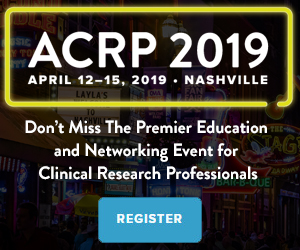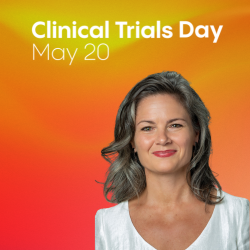These are exciting times to be in the clinical trials industry, says Karri Venn, RD, CDE, CCRC, president of research for LMCǀManna Research in Toronto, Canada. With new technologies and concepts such as real-world data (RWD) and real-world evidence (RWE) coming to the forefront, the clinical trial 2019 landscape has evolved into “a new way of doing research,” she says.
Harnessed properly, the upside of RWD-fueled trials is huge, Venn believes, including:
- Outcomes on larger datasets
- Linkages of data across different sources
- Prevention of false starts and accelerated time to market
- Reduced costs and improved efficiency of trials
- Faster responses to adverse developments
- Increased personalization of drug therapy and treatments
- Identification of new markets and underserved patient populations
- Satisfaction of payer demands based on cost-effective medicines
- Achievement of payer acceptance—especially for rare disorders
The U.S. Food and Drug Administration (FDA) defines RWD as data relating to patient health status and/or the delivery of healthcare routinely collected from a variety of sources. RWE is the clinical evidence about the usage, and potential benefits or risks, of a medical product derived from analysis of RWD.
RWD, including electronic health information, social media data, and data from mobile and wearable devices, produces RWE that provides insights beyond those of traditional data, Venn says.
Big Data, RWD, and RWE: What’s the Difference and How is it Changing the Research Landscape?
Join Karri Venn of LMC|Manna Research at ACRP 2019 this April as she reviews the differences between real world data (RWD) and real world evidence (RWE). Learn about the market and regulatory impacts of RWE – including the updated FDA guidelines required RWE use in regulatory decisions – and how artificial intelligence and information exchange can be securely managed.
Venn and her team members are actively exploring the possibilities in their own operation. “We just opened our own RWE team. It’s a potentially new revenue stream,” she says. For example, with onsite epidemiologists, “if you’re able to do the not-so-traditional Phase IV observational trial, but [instead] do a registry trial because you’ve got the data already captured in your electronic medical records and you can actually report on it, that’s valuable insight to the pharma companies for marketing,” Venn explains.
There’s another factor the hesitant adopter might want to consider. Most, if not all, of these new technologies appear to be here to stay, and “if you don’t get it done right, you’ll be left behind,” Venn says. “You really have to be at the cutting edge, for sure, but you also have to be willing to learn and basically implement new standards in the way you might have traditionally done research,” she adds.
Finally, patient data security and integrity are always of paramount importance. “There’s so much benefit to use of big data, if handled properly [and] if there’s patient consent and protection of privacy,” Venn stresses. As an industry, “we have to make sure that the data people have, and the data they are able to access, are protected.”
Author: Michael Causey




